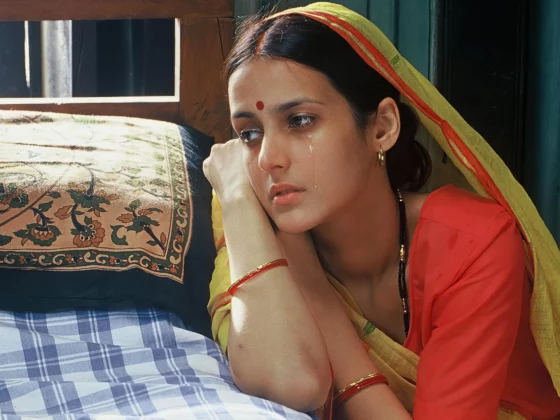
While talking about the unicorns of India, some start-ups have revolutionised the whole industry they work in. One such revolutionary unicorn start-up is Lenskart, which has brought about significant changes in the eyewear industry. It has become such a strong player in the Indian eyewear space that it has grown to serve more than 4 lakh customers every month and accounts for nearly 30% of India’s organised eyewear market.
An overview:
Lenskart is an Indian optical prescription eyewear retail chain. Lenskart was founded by Peyush Bansal, Amit Chaudhary and Sumeet Kapahi in November 2010. Peyush Bansal is the CEO and MD of this company. He was an ex techie working for Microsoft in Seattle, USA. Lenskart’s headquarter is situated in Delhi, India. Lenskart serves its customers all across the world. It has more than 900 stores in 175 locations across the country and more than 5,000 employees working for them.
Lenskart entered the unicorn group in September 2019 with an entry valuation of 1.1 billion USD. The current valuation of Lenskart is 4.3 billion USD.
How was the eyewear industry before Lenskart?
When the financial year ended in 2020, while Titan eye plus’s revenue grew by just 6%, lenskart’s revenue skyrocketed by 98%, going from 485 crore INR (62.57 million USD) to over 963 crore INR (124.25 million USD). And because of this, Lenskart took a major lead in the eyewear market in India.
So, the question is, how did Lenskart beat the giants like Titan Eyeplus in the eyewear industry? And what was Lenskart’s business strategy?
Back in the early 2000s, buying specs was a burdensome procedure. People first had to take time out and go to the optician, select suitable frames from a limited collection, check on various styles, choose their glasses, and then wait for nearly six to seven days before receiving their glasses.
Although it looks pretty simple on paper, only those who have gone through this procedure will understand its hefty. If you look at the eyewear market in India, 95% of the market was filled with unorganised players selling cheap products with no guarantee or no warranty. On the other hand, the organised market, although the service was good, the cheapest specs you could buy, used to start from 1,500 INR, which was Titan Eyeplus’s entry product and, that too, only from 2007 onwards. And below this category, i.e. below the 1,500 INR price range, there were barely any reputed brands.
Now, when you see this cost range, most people would assume that the prices are so high because of the high making costs or the low margins in the eyewear market. To answer this, let us tell you that, according to the report, the margins for eyewear brands like Warby Parker and Luxottica are 70 and 166 USD, respectively.
What opportunity they saw:
Peyush Bansal and his co-founders saw a huge business opportunity, and they spotted three problems that needed to be addressed in the eyewear market in India.
- The first problem was the cost, which gave them a considerable scope to play in the 250 INR to 1,500 INR segment.
- The second problem was that eyewear was still treated as a piece of medical equipment, which did not make people with glasses feel good. It was very similar to how people with hearing aids feel today.
- And lastly, let alone the affordability and accessibility of opticians were very limited in India. More than 500 million people need vision correction, yet not even 200 million people are doing something about it.
This is why Peyush Bansal and his co-founders started Lenskart with a vision to correct the vision of India.
How they offered solutions:
Riding the e-commerce wave, Lenskart entered the prescription eyeglasses market with three value propositions: cost, convenience, and variety.
While the cheapest branded product, “Titan Eyeplus,” was priced at 1,500 INR, lenskart cut its margins and started selling at a minimum price of 250 INR.
While local opticians took 6-7 days to deliver your glasses, lenskart started delivering them in just 72 hours.
While local opticians had just a few hundred designs, lenskart had over 5,000 designs.
While local opticians did not give any guarantee or warranty on unbranded products, lenskart gave away a one-year warranty on frames and one year for lenses and introduced a 14-day no-questions-asked return policy.
While the glasses from local opticians often had a margin of error, lenskart delivered their product with zero error tolerance.
Therefore, lenskart provided all the perks of a branded product at the cost of an unbranded product.
Through its online model, Lenskart was able to eliminate its middlemen and was able to cut the cost by nearly 70%. This is why they can sell their products at such low prices. Just like any other business model, lenskart tackled the adoption challenges very elegantly.
To lure the sceptics of e-commerce, they gave away crazy offers like free frames and heavy discounts. To tackle the lack of trial problem, they came up with their revolutionary virtual 3D try-on feature.
They also introduced home eye check-ups and home trials for their customers to offer an end-to-end experience.
And they spent a tonne of money on making eyewear look cool with lifestyle marketing.
On top of that, they entered the semi-premium, premium markets with their brands like John Jacobs and Vincent Chase.
Their accuracy in giving the right product to the customers is so amazing that their return rate was as low as 4%. This number is super crazy because, in e-commerce, even a 15% return rate is considered excellent.
Why physical stores:

Something strange happened in 2014, as we saw lenskart suddenly start opening physical stores all across the country. In 2014, lenskart launched 20 offline stores in partnership with optometrists in India’s tier 2 and tier 3 cities. But now the question is, did lenskart become exactly what they were trying to disrupt? And if not, why did they open stores?
Well, there are three reasons for that:
- First, as we saw before, 95% of India’s eyewear market was filled with unorganised brands, which had no way of online access and still people bought from them. And back in 2014, internet penetration was too low. So, by being adamant about the online-only model, lenskart was missing out on a tonne of customers in tier 2 and tier 3 cities who were still shopping offline merely because of scepticism.
- Second, because lenskart was investing in their manufacturing, they already had systems in place that could produce high-quality glasses at a very low cost. With the supply chain so robust that they could deliver to thousands of areas across the country in just three days.
- And lastly, because of its digital marketing and its delivery model, the name of lenskart had already reached the corners of the country, which by default made them far superior to the unorganised brands. And at the same time, the organised brands like “Lawrence & Mayo” did not have a strong presence in India’s tier 2 and tier 3 cities.
So, the only thing needed for the lenskart was the touch and feel factor. So, lenskart adopted something called the “Endless Aisle Strategy,” which is a perfect mix of both online and offline models.
This laid such a strong foundation for lenskart that when the pandemic hit, while the local opticians had to keep their shops closed, while big brands like “Lawrence & Mayo” had limited reach, lenskart was seamlessly able to deliver its products through the lengths and breadths of the country. This is the reason why lenskart grew by 98% from 486 crore INR to 963 crore INR in revenue while Titan Eyeplus grew by just 6% and became the market leader in the eyewear industry in India.
Where is Lenskart standing now?
Now, they have already started dominating the premium eyewear space with John Jacobs in the 3,000+ INR base and Vincent Chase in the 1,000 INR to 1,500 INR range. And if done right, these brands could become the biggest eyewear brands in India.

 Add to favorites
Add to favorites








